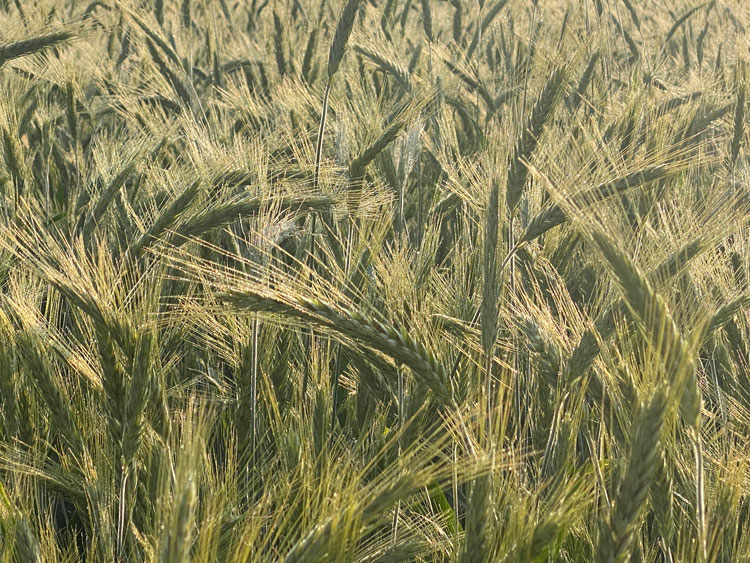
In a few weeks, winter annual grasses or small grain grasses will accelerate their growth, and the harvest of small grain grasses for silage will begin. Hence, it is time to plan for the next small grain harvest season. In recent years, we have been investigating the most convenient maturity for harvesting small grain grasses for silage.
For our research, we planted two varieties of barley, two varieties of rye, and four varieties of triticale over two seasons and at three locations. Our first observation was that harvesting at the soft-dough stage yielded two to three times more dry matter than harvesting at the boot stage. Therefore, harvesting at the soft-dough stage might be more convenient for farmers needing to replenish forage inventories than harvesting at the boot stage of maturity. However, one drawback of harvesting at the soft-dough stage is that it will delay harvest 30 to 40 days, which might negatively impact the growing conditions of the following summer crop.
Another benefit of harvesting at soft-dough stage is that the production cost of the resulting silage would decline. That being said, we also learned that fixed costs are 30% to 50% of the total cost of production, meaning that while dry matter yield can double or triple, harvesting at the soft-dough stage of maturity reduces the theoretical cost of production of the silage only by 20% to 35%.
As expected, harvesting small grain grasses at the boot stage resulted in forages with better nutritional value. We attributed this to the lower concentrations of ash and fiber plus the greater fiber digestibility and concentration of crude protein. We highlight, however, that the ration formulation system did not include small grain grass forage in rations for high-producing dairy cows when using a least-cost formulation approach. This occurred despite the cheaper forage obtained at the soft-dough stage or the better quality obtained at the boot stage. This means that the formulation system still prefers to include corn silage as the forage source, given that corn silage has better nutritional quality and is cheaper than small grain grass forages.
Although it might seem surprising, the latter information does not mean that small grain grass silage is useless. If corn silage inventories are low at the farm, then ensiling small grain grasses should help “stretch” forage inventories. Looking to the upcoming harvest, however, deciding when to harvest the small grain grasses might depend more on what the farmer expects for the following crop than on the nutritional composition or the cost of the small grain grass silage.








